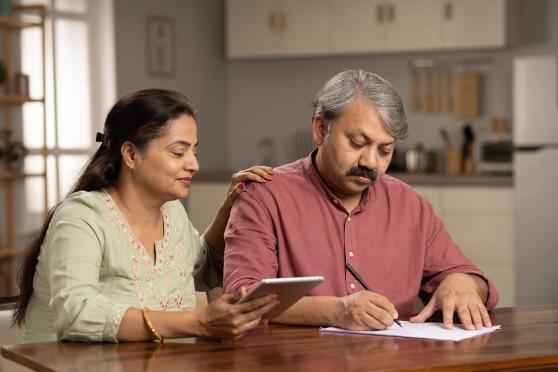Portion control for real life
Realistic ways to manage the size of your meals

Have you heard the rule that a 3-oz serving of beef, chicken, or fish should be about the size of your palm? We have, too. But chances are, your palm is not exactly the equivalent of a healthy, recommended portion of protein.
"I don't really like using body parts to portion," says Bonnie Taub-Dix, RD, CDN, founder of BTD Nutrition Consultants and author of Read It Before You Eat It. Portion control guidelines using body parts are generally built around the proportions of a small adult woman—so if you're a taller man or woman, the palm rule for protein is likely not accurate for you. Here, learn why you need to master portion control and smarter ways to do it.
Why Portions Matter
Simply put, people are confused about portion sizes, Taub-Dix says. Plate sizes have grown over the past century, and our portions—both at home and in restaurants—have grown right along with our dishes.
"It's also about what you get in bags and boxes," she says. We tend to neglect serving sizes in packaged foods, but a bottle of juice may contain more than enough for one person, an individually wrapped muffin may actually be worth two servings, and a bag of microwave popcorn may have almost five servings! Without knowing the proper portion, it's all too easy to consume the entire thing, which leads to unintentional overeating. Do this on a regular basis, and you could be taking in way more calories and fat than you realize.
Luckily, there's also an upside to portion control. If you're trying to lose weight, exercising portion control allows you to indulge in your favorite higher-calorie foods without messing up your progress. That means you don't have to completely cut out steak, pasta, or sweets from your diet, as long as you stick to healthy portions.
3 Ways to Measure Smarter
Whether you're trying to lose weight or simply aiming for a more balanced diet, you should know how much of each food group you need to eat. The USDA's Daily Food Plan tool can help you figure that out. Then follow these tips:
- Invest in measuring tools. Instead of eye-balling your servings, use measuring cups and an inexpensive food scale to portion out your food, Taub-Dix says. It may seem a little obsessive, but it's the best way to know exactly how much cereal is in your bowl or pasta is on your plate.
- Remember the 1/2 + 1/4 + 1/4 rule. Whether you're at home or at a restaurant, think of your plate in parts. One-half of your plate should be vegetables or fruit, one-fourth should be lean protein, and one-fourth should be whole grains, Taub-Dix says.
- Visualize a tennis ball or deck of cards. While your palm might not be a great guide for portions, objects with fixed sizes are. For example, a 1/2 cup of cooked grains, like rice, is about the size of a tennis ball, and 3 oz of protein is roughly the size of a deck of cards.


